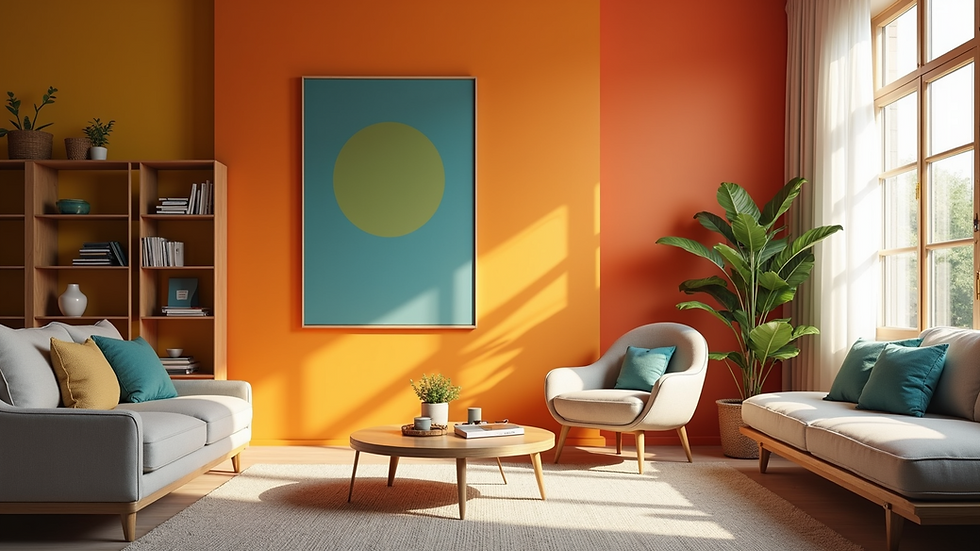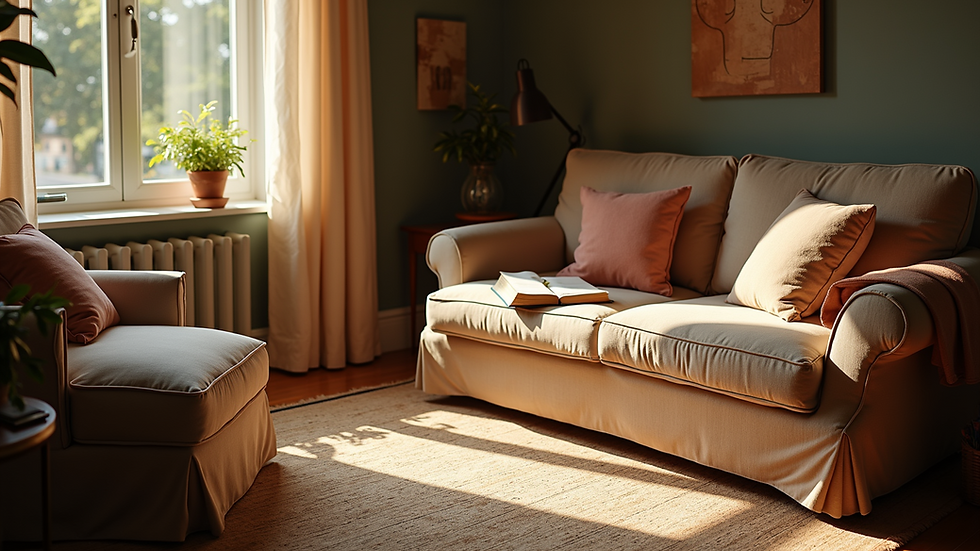How Does the Vibe of a Room Really Shape Your Mood in Interior Design
- Journalising Designers
- Jul 21
- 3 min read
When you step into a room, what captures your attention first? Is it the vibrant colors on the walls, the style of the furniture, or perhaps how the light glows in the space? Every detail within a room combines to create a unique atmosphere, profoundly affecting how we feel and behave. This emotional connection to our surroundings is essential in interior design. Let’s explore how the vibe of a room influences your mood and enriches your experience.
The Impact of Color
Colors are crucial in establishing the mood of any room. Research shows that colors can affect our emotions and behavior. For example, warm colors like red and orange can boost energy levels, potentially increasing creativity by 25%. On the flip side, cool colors such as blue and green are known to promote calmness and relaxation.
Think about the places you enjoy most. You might feel energized in a lively café adorned with bold artwork, but a serene library painted in gentle pastels might provide the peace you seek when unwinding. Choosing the right color scheme can help interior designers create spaces that resonate with the feelings you want to evoke.

Selecting colors might turn a basic room into a cozy retreat or an energetic gathering spot. Consider the vibe you want to create and choose colors that align with that mood.
The Role of Light
Lighting is an important aspect of interior design that can significantly influence our feelings. Natural light is a mood booster, enhancing feelings of warmth and openness. Studies show that exposure to natural light can increase productivity by 15%. However, artificial lighting can either uplift or detract from a room’s atmosphere.
Soft, warm lighting encourages relaxation, making it ideal for winding down in the evening. In contrast, bright, direct lighting can increase energy levels, making it perfect for workspaces or social gatherings. Interior designers utilize various types of fixtures to ensure every corner contributes to the desired mood.

When designing your space, consider how different light sources enhance or alter your mood. Layered lighting with ambient, task, and accent types can create versatile environments, adapting to your needs throughout the day.
Furniture Layout and Arrangement
The arrangement of furniture can greatly influence a room's vibe. For instance, a layout with well-defined seating areas often encourages conversation and connection, making people feel more welcome and engaged. Conversely, a sparse setup might foster feelings of isolation.
The style and size of furniture can also impact emotions. Oversized couches can create a sense of coziness, while sleek, modern pieces might add energy and dynamism. Reflect on how you wish to use the space and arrange furniture to facilitate that experience.

Thoughtful furniture placement promotes movement and interaction, making rooms feel inviting and accessible. Assess your area and determine arrangements that support the desired atmosphere.
Texture and Materials
Textures and materials can significantly affect a room's vibe as well. Soft fabrics encourage relaxation, while sleek surfaces can help promote clarity and focus. Combining textures adds depth and interest, creating a rich, multi-sensory experience.
For example, using natural materials like wood and stone can instill feelings of grounding and calmness. At the same time, shiny metals and glass can infuse a contemporary vibe. Understanding how varying materials affect emotions can assist you in shaping a more intentional design.
Personal Touches and Art
Lastly, incorporating personal items and art can transform a room's feel. Surrounding yourself with meaningful objects, such as family photos or cherished souvenirs, fosters connection and warmth. Art has the power to elevate a plain wall into a vibrant focal point, showcasing both personality and passion.
Choose artwork that resonates with you emotionally, whether it's a striking painting or an array of unique decor items. The right pieces contribute to creating a distinctive identity for your space.
Final Thoughts
The vibe of a room goes beyond aesthetics. It is deeply connected to our feelings and overall well-being. By thoughtfully blending color, light, furniture arrangement, texture, and personal items, we can create spaces that uplift, relax, or inspire us based on our needs.
As you embark on your interior design journey, trust in your ability to understand how different elements influence your emotions. Embrace your instincts and remain open to experimentation. Creating spaces that reflect the vibes you want to feel is not just an art; it's an expression of who you are. Happy designing!

